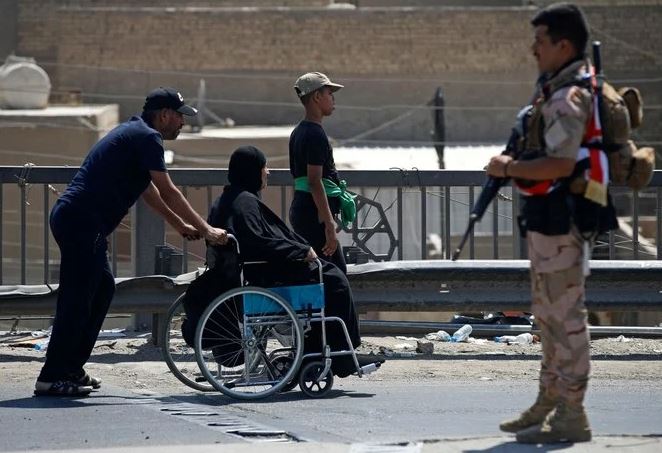Twenty million pilgrims, swelled by a record influx of Iranians, have converged on the Iraqi shrine city of Karbala to mark Arbaeen, an annual Shiite festival that climaxes on Saturday.
It is one of the world’s biggest religious gatherings, observed in Iraq and neighboring Iran, both Shiite majority countries.
The event marks the end of a 40-day mourning period for the killing of Imam Hussein — a founding figure in Shiite Islam and grandson of the Prophet Muhammad — by the forces of the caliph Yazid in 680 AD.
So far, there has been little sign of the intra-Shiite political tensions that have prevented Iraq forming a new government since elections nearly a year ago.
“It’s as if I’ve arrived in paradise,” said Najme, a 37-year-old primary school teacher, wrapped in a black chador and her feet clad in sneakers.
Along with her husband and parents, she is among more than three million Iranians attending the pilgrimage in Karbala, a new record, according to the Iranian government spokesman.
The family drove from the Iranian clerical center of Qom to Najaf — a second Shiite holy city in Iraq — and then walked 80 kilometers (50 miles) to Karbala, home to the shrines of Imam Hussein and his brother, Abbas.
Najme’s mother Latifa could not disguise her joy.
“I keep calling the family back in Iran — I send them photos and videos, to share the atmosphere with them,” she said.
Iranian pilgrims have flocked to the event this year in part due to Baghdad and Tehran waiving visa requirements for travel between the two countries since late last year.
The influx of pilgrims has filled hotels and sent room prices soaring.
Some have even resorted to bedding down on pavements.
The pilgrims press forward on the esplanade, and among alleys that snake around the two mausoleums that sparkle with gold and blue under the unrelenting sun.
At night, processions are bathed in neon light.
Men dressed in black jump up and down on the spot, beating their torsos to the rhythm of religious chants blaring from loudspeakers.
Some cry hot tears, others slap their faces, to mark the killing of Imam Hussein centuries ago in the Karbala desert.
Among the 20 million pilgrims — up from 17 million last year — are five million foreign visitors, according to figures released by Baghdad.
Iran is of course the key external source.
“Arbaeen is an opportunity… for working class Iranians to travel” and celebrate what is both a religious and social occasion, said Alex Shams, who is researching a doctorate on the politics of Shiite Islam at the University of Chicago.
“It’s almost impossible for Iranians to get visas to other countries,” he noted, and US sanctions have made the Iranian rial almost worthless. “Iraq is really one of the few countries that… they can afford to visit.”
Before Saddam Hussein was overthrown in the US-led invasion of 2003, Shiites in Iraq were forbidden from overtly commemorating Arbaeen and indiscreet worshippers risked prison.
But nowadays, the event flourishes and Shams notes that Iran actively promotes the pilgrimage, “despite the fact it is very much an Iraqi grassroots thing.”
Tehran, and other political actors too, seeks to benefit from the pilgrimage’s popularity to “promote their own brand — to kind of coopt it,” Shams said.

